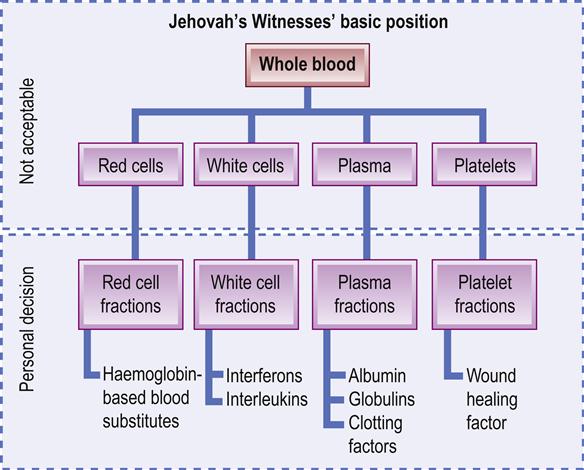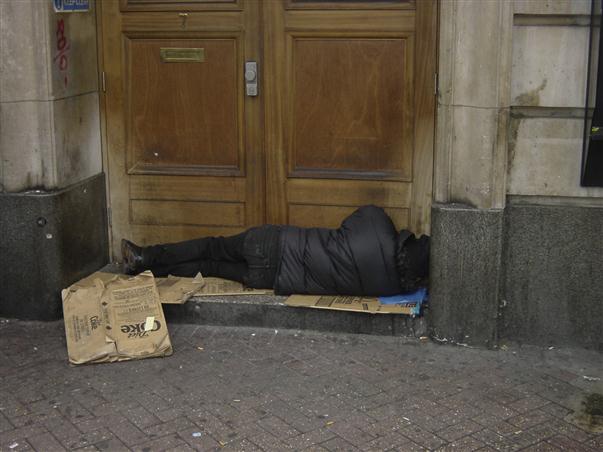Minority groups
This chapter focuses (alphabetically) mainly on medical issues related to ethnic and cultural groups, homeless people, immigrants, people in custodial institutions, refugees and asylees, Roma, sexual minorities and socioeconomically deprived people. The importance of ‘protected characteristics’ as defined by the Equalities and Human Rights Commission are noted in Chapter 2 (http://www.equalityhumanrights.com/advice-and-guidance/new-equality-act-guidance/protected-characteristics-definitions/).
Ethnic and Cultural Groups
This section tabulates some of the main aspects (Table 30.1). Population mobility increases inexorably, leading to enormous changes in the structure of many populations across the world. This is especially evident in the developed world and as a consequence of conflicts and climate change.
Table 30.1
Ethnic and cultural groups: languages, religions, habits and medical aspectsa
< ?comst?>
| Ethnic group | Main language(s) | Main religion(s) | Common diet, habits and medical aspects |
| Albanians (Kosovars) | Albanian | Islam Christianity |
Alcohol use and smoking endemic, and younger generation uses narcotics at an increasing rate |
| Afro-Caribbeans | English French Spanish |
Christianity | Seventh Day Adventists consume no pork, tea, coffee or alcohol. Rastafarians often use marijuana but may be vegan or eat no pork. Crack and cocaine use is common in Jamaicans |
| Arabs | Arabic | Islam | See Table 30.2 |
| Armenians | Armenian | Christianity | – |
| Bangladeshi | Bengali Urdu |
Islam | Healthy diet. Dislike oral medication. Females prefer female health-care workers. Often smoke or use paan |
| Bosnian | Serbo-Croat | Islam | Healthy diet. Dislike oral medication. Females prefer female health-care workers |
| Cambodian | Khmer | Buddhist | Traditional medicine may be preferred |
| Chinese | Cantonese Mandarin |
Taoism Confucianism Buddhism |
Traditional Chinese medicine may be used. Doctor-shopping common. Often eat rice diet and smoke heavily. May not like venepuncture |
| Eritreans | Tigrinya Arabic |
Christianity Islam |
Coptic Christians do not consume meat or dairy products for more than half of each year |
| Ethiopians | Amharic | Christianity Islam |
Coptic Christians do not consume meat or dairy products for more than half of each year |
| Ghanaian | Twi | Islam | Traditional medicine may be used |
| Christianity | |||
| Greeks | Greek | Christianity | Healthy diet. High tobacco use |
| Gujaratis | Gujarati | Hinduism | Often eat no meat, eggs or fish |
| Indian | Hindi Punjabi |
Hinduism (mainly) Islam |
Traditional (Ayurvedic) medicine. Often vegetarian or vegan. High tobacco and betel use. Rarely, vitamin B12-deficient from veganism |
| English | Christianity | ||
| Sikhism | |||
| Zoroastrianism | |||
| Iranian | Farsi | Islam | – |
| Iraqi | Arabic | Islam | – |
| Irish | English | Christianity | May have high alcohol intake |
| Japanese | Japanese | Buddhism | Diet often of rice, raw fish and eggs |
| Shintoism | |||
| Koreans | Korean (Han-gul) | Confucianism Shamanism Taoism Buddhism |
Traditional medicine commonly used. Be aware of communication styles and patterns, such as no eye contact, smiling at inopportune times represents lack of respect and intelligence |
| Kurds (a diverse ethnic group from Kurdistan, encompassing parts of Turkey, Iran, Iraq, Syria) | Kurdish | Islam | – |
| Laotians | Laotian | Buddhism | – |
| Latin Americans | Spanish | Christianity | – |
| Portuguese | |||
| Liberians | English | Traditional medicine may be used | |
| Nigerians | Four peoples/languages: Hausa, Yoruba, Ibo and Fulani | Islam Christianity |
Traditional medicine may be used |
| Pakistanis | Punjabi | Islam | See Table 30.2 |
| Portuguese | Portuguese | Christianity | High tobacco use |
| Russian Federation | Russian | Christianity | – |
| Somalis | Somali | Islam | May have qat habit |
| Arabic | |||
| South Africans (whites) | English | Christianity | – |
| Afrikaans | |||
| Sudanese | Arabic | Islam | Traditional medicine may be used |
| English | Christianity | ||
| Tamils | Tamil | Hinduism | Vegetarian |
| Tibetans | Tibetan | Buddhism | Ayurvedic tradition |
| Chinese | |||
| Turks | Turkish | Islam | See Table 30.2 |
| Vietnamese | Vietnamese | Buddhism | Vegetarian |
| Cantonese | Christianity |
< ?comen?>< ?comst1?>
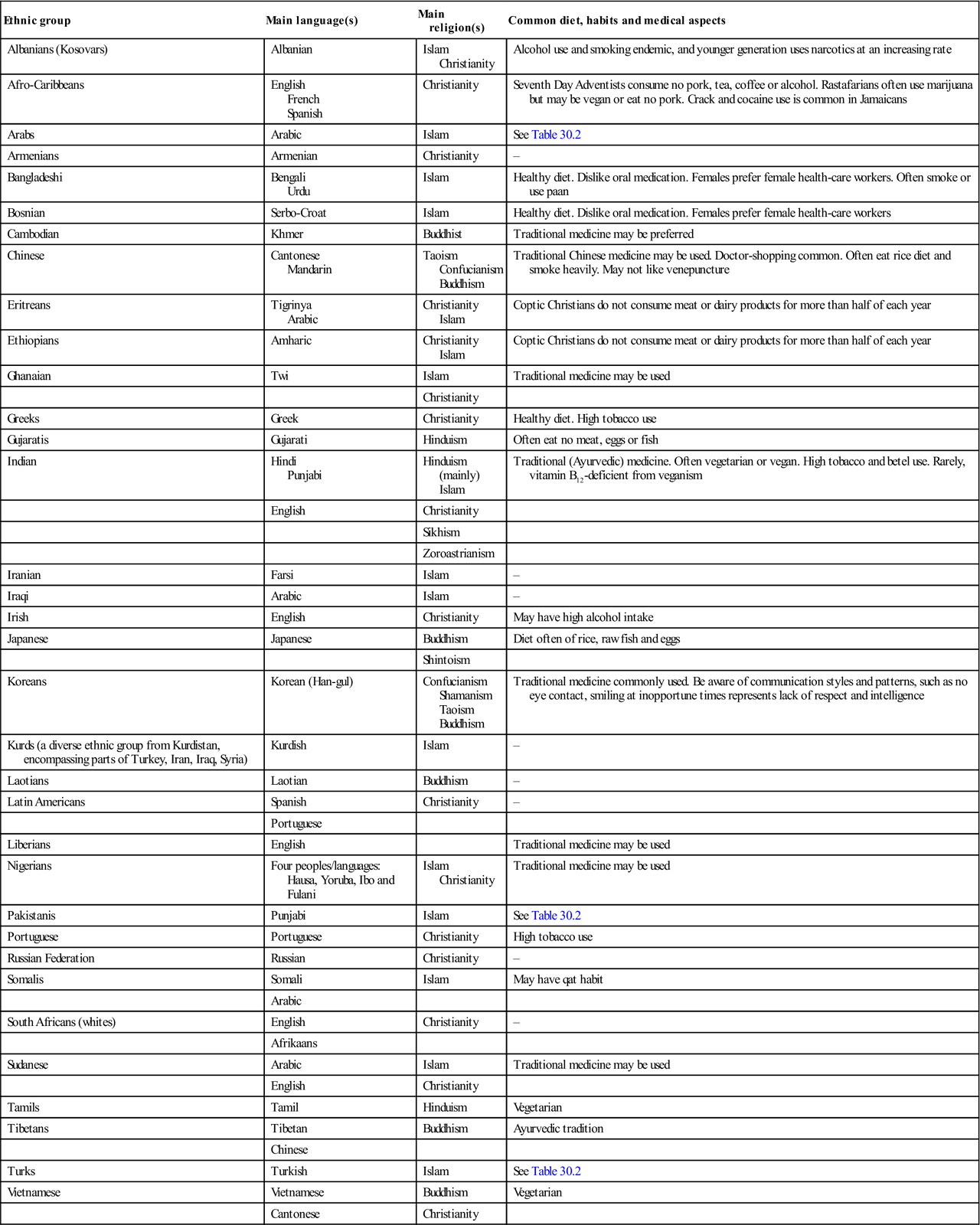
< ?comst1?>
< ?comen1?>
For example, by 2011 almost 1 in 8 people living in the UK were foreign-born. The proportion of the UK population born outside Europe reached 10% overall, with large regional variations from, for example, 3% in the far south-west to 30% in East London. Ongoing expansion of the European Union is producing major changes, as are conflicts and economic issues worldwide. Some of these people fall into one or more of the groups below.
It is difficult to characterize all the different faiths and cultures, since differences exist according to social class, background, ethnicity and other factors, but Table 30.2 attempts to highlight some relevant aspects.
Table 30.2
Main faiths/religions and their medical relevancea
< ?comst?>
| Faith/religion | Main festival or religious occasion(s) | Dietary aspects | Possible main medical problems | Other comments |
| Buddhism | Wesak | Often vegetarian | – | – |
| Jehovah’s Witnesses | Christmas, Easter | – | Firmly believe that blood has sacred meaning and that it should not be removed from the body and stored; nor should donor blood be taken in during a transfusion. Often refuse blood transfusions and organ transplants, and human blood products like platelets (Ch. 8) | Jehovah’s Witness Watchtower Society places a biblical ban on the storage/use of animal blood (see also Appendix 30.1 and Fig. 30.1) |
| Hinduism | Diwali, Maha Shivaratri, Ram Navami, Janmashtami | Often eat no meat (particularly beef) or meat products, eggs or fish Some drink no tea, coffee or alcohol, and eat no garlic or onions |
Vitamin B12-deficient from veganism | – |
| Islam (Muslim) | Ramadan, Mawlid, al-Nabi | Eat no pork, drink no alcohol. Eat only Halal meat. During Ramadan, between sunrise and sunset, eat and drink nothing (including water), and smoke nothing, unless ill, young, old or pregnant | May be non-compliant with oral medication during fasts such as Ramadan. Alcohol-free oral products should be used. Meningitis vaccination indicated at Haj and Umra | Often cover much of the body and head/face. Right hand is considered clean, and used for eating and shaking hands. Handshakes are appropriate only between men or between women. It is not acceptable for a man to shake the hand of a Shiite woman |
| Women are not permitted to be alone with a man who is not her husband or relative. At public events, women are segregated from men | ||||
| Judaism | Rosh Hashanah, Yom Kippur, Pesach | Eat no pork or shellfish, and only kosher meat Fast for 25 h from eve of Yom Kippur |
Orthodox Jews may refuse organ transplants. Liable to Tay–Sachs disease (inherited neurological defects), Canavan disease (inherited brain disorder), Fanconi anaemia, pemphigus | No work on Sabbath (Saturday) |
| Sikhism | Vaisakhi, Diwali, Hola | Eat no fish or eggs, and usually no beef or pork | Vitamin B12-deficient from veganism | Invariably cover head |
| Often vegetarian |
< ?comen?>< ?comst1?>
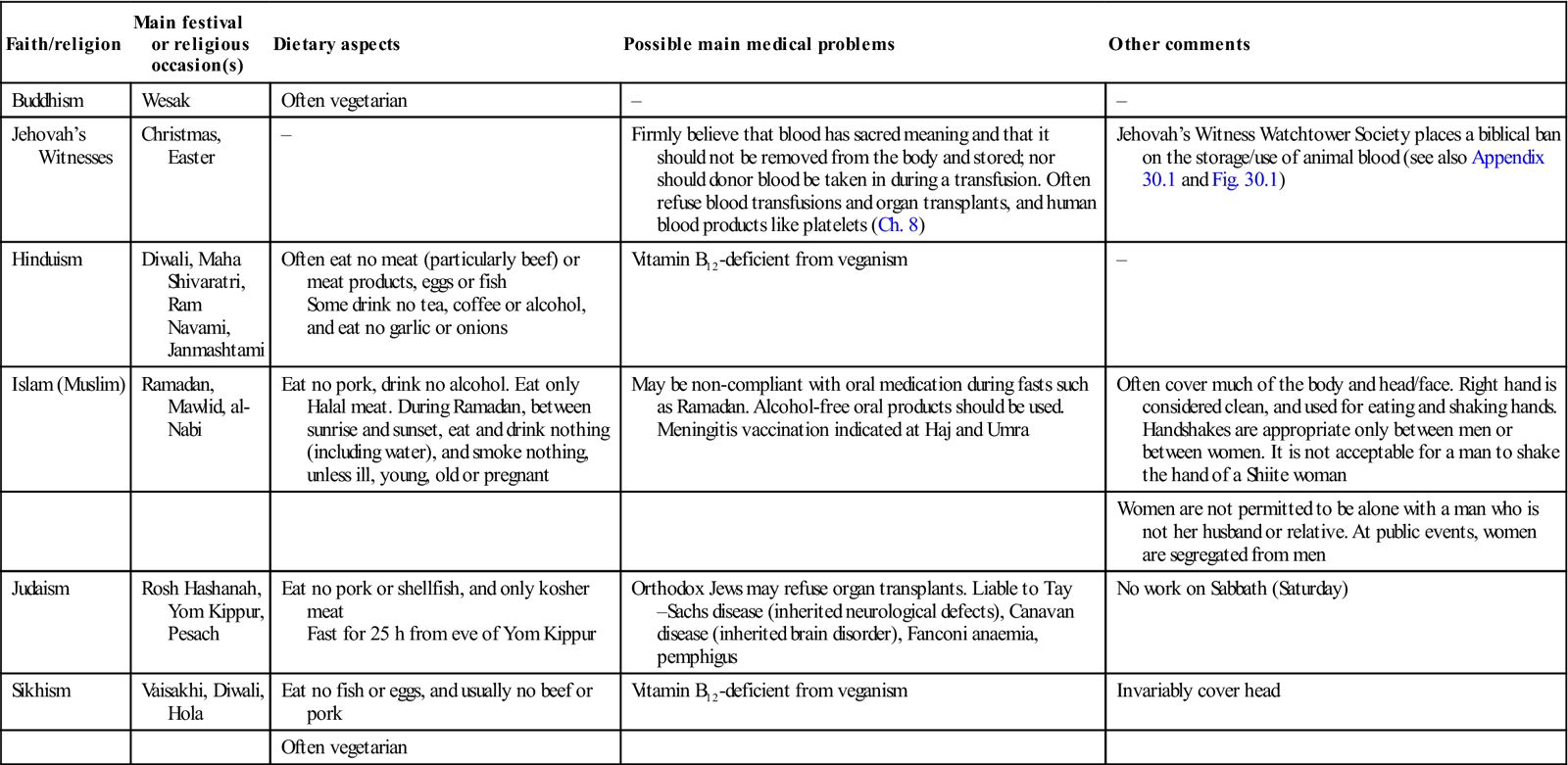
< ?comst1?>
< ?comen1?>
aIt is impossible to generalize; always consider the individual and their wishes and needs. See also Table 30.1.
Communication is crucial between dental professionals and patients from different faiths, cultures and countries. Professional interpreters may therefore be required.
Homeless People
Homeless people and those who live in poor accommodation tend to have more illness, mainly due to exposure, inadequate diet, inadequate hygiene, stress, violence, accidents and exposure to communicable diseases and drug abuse (Fig. 30.2). Mental health problems, including psychotic illness, depression and anxiety, alcohol addiction or injecting drug use, are common. There are high rates of blood-borne and other infections, such as hepatitis B and C, and human immunodeficiency virus (HIV), all of which can be associated mainly with drug use and neglect of health. Tuberculosis is common (Ch. 15). Most report negative oral health impacts, having caries and inflammatory periodontal disease; over half have current orofacial pain. Additional oral health impacts include difficulty with eating, smiling, concentrating and talking. Dental anxiety status is related to dental disease experience, which impacts negatively on quality of life. Various studies have confirmed that few had dental care in the previous year.
The problems, summarized in Table 30.3, serve to perpetuate homelessness and impede access to health care. There is a need to provide more accessible and affordable health services to homeless people.
Table 30.3
Medical problems prevalent in homeless peoplea
< ?comst?>
| Type | Detail |
| Assaults | Physical |
| Psychological | |
| Sexual | |
| Cardiovascular | Hypertension |
| Peripheral vascular disease | |
| Exposure | Hypothermia |
| Gastrointestinal | Vomiting and diarrhoea |
| Infections | Infestations (lice, fleas, scabies) |
| Lower respiratory infections, e.g. influenza, pneumonia, tuberculosis | |
| Sexually shared infections | |
| Upper respiratory viral infections | |
| Viral hepatitis | |
| Mental | Depression |
| Schizophrenia | |
| Stress, anxiety, substance abuse | |
| Nutritional | Malnutrition |
| Substance abuse | Alcohol |
| Illegal drugs and volatile substance abuse | |
| Tobacco |
< ?comen?>< ?comst1?>
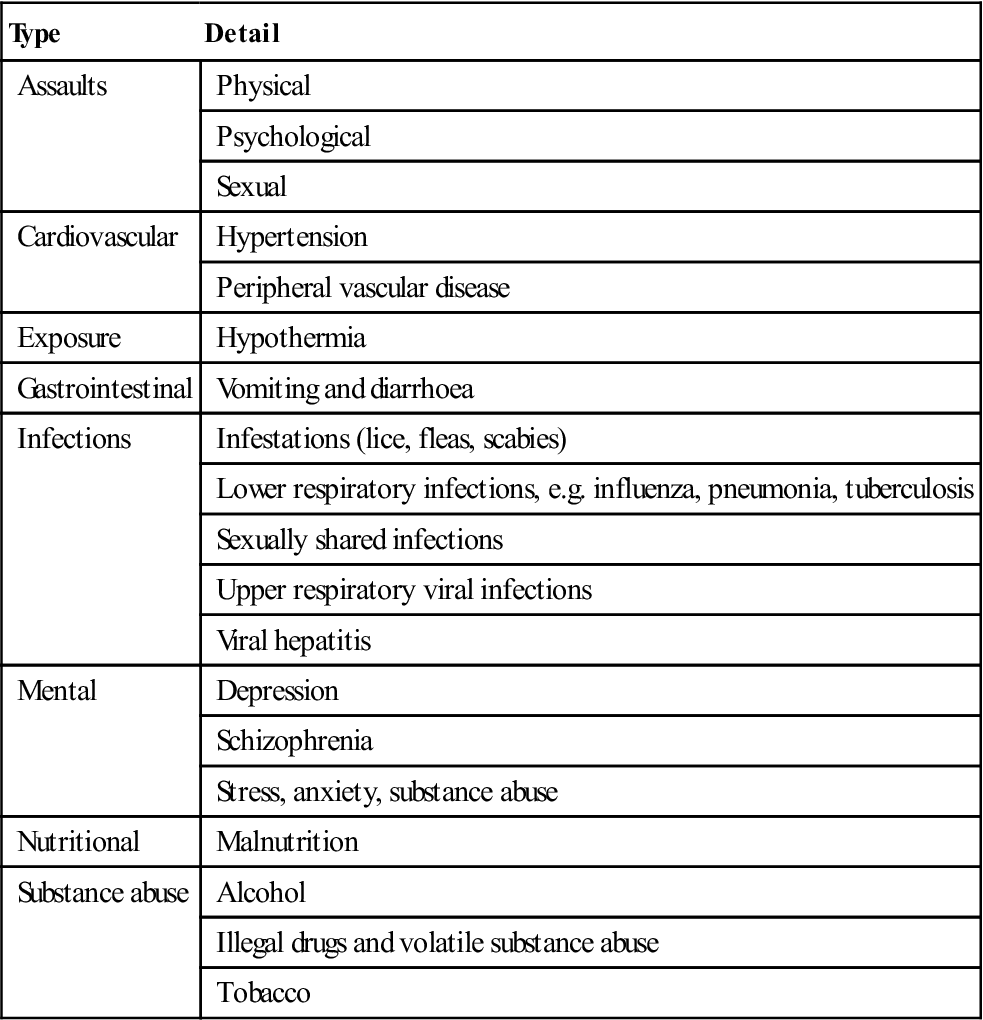
< ?comst1?>
< ?comen1?>
Immigrants
Immigrants and refugees can arrive from diverse social, economic, educational, cultural, religious and ethnic backgrounds for a variety of reasons: to seek work, education or economic advantage; flee war, political upheaval or persecution; or join families from which they have been separated. Many arrive with inadequate resources and suffer social exclusion and inequality of health-care provision. The acute phase following immigration, particularly from the developing world, war zones and tropical regions, attracts most concern (Table 30.4/>
Stay updated, free dental videos. Join our Telegram channel

VIDEdental - Online dental courses


